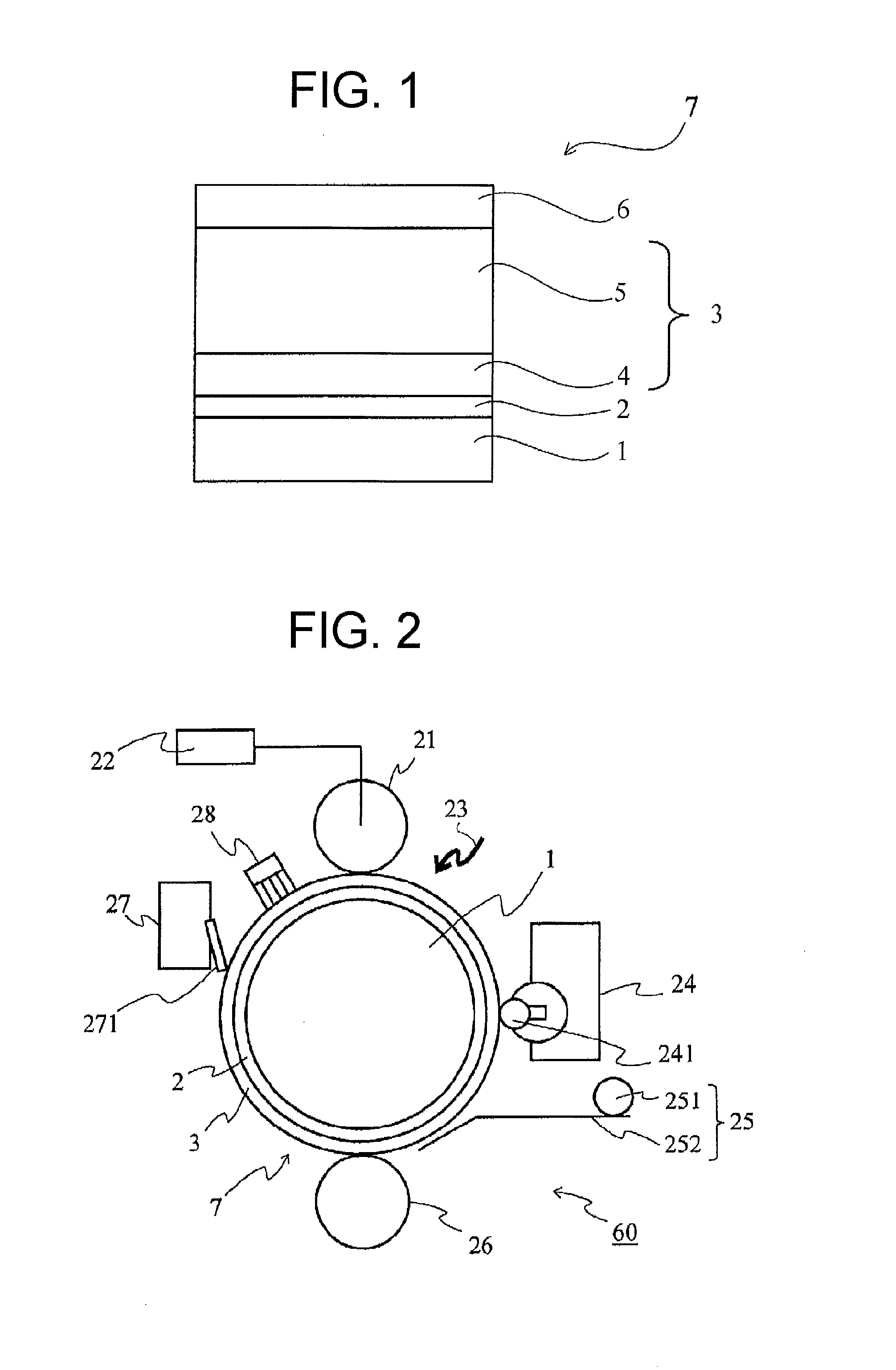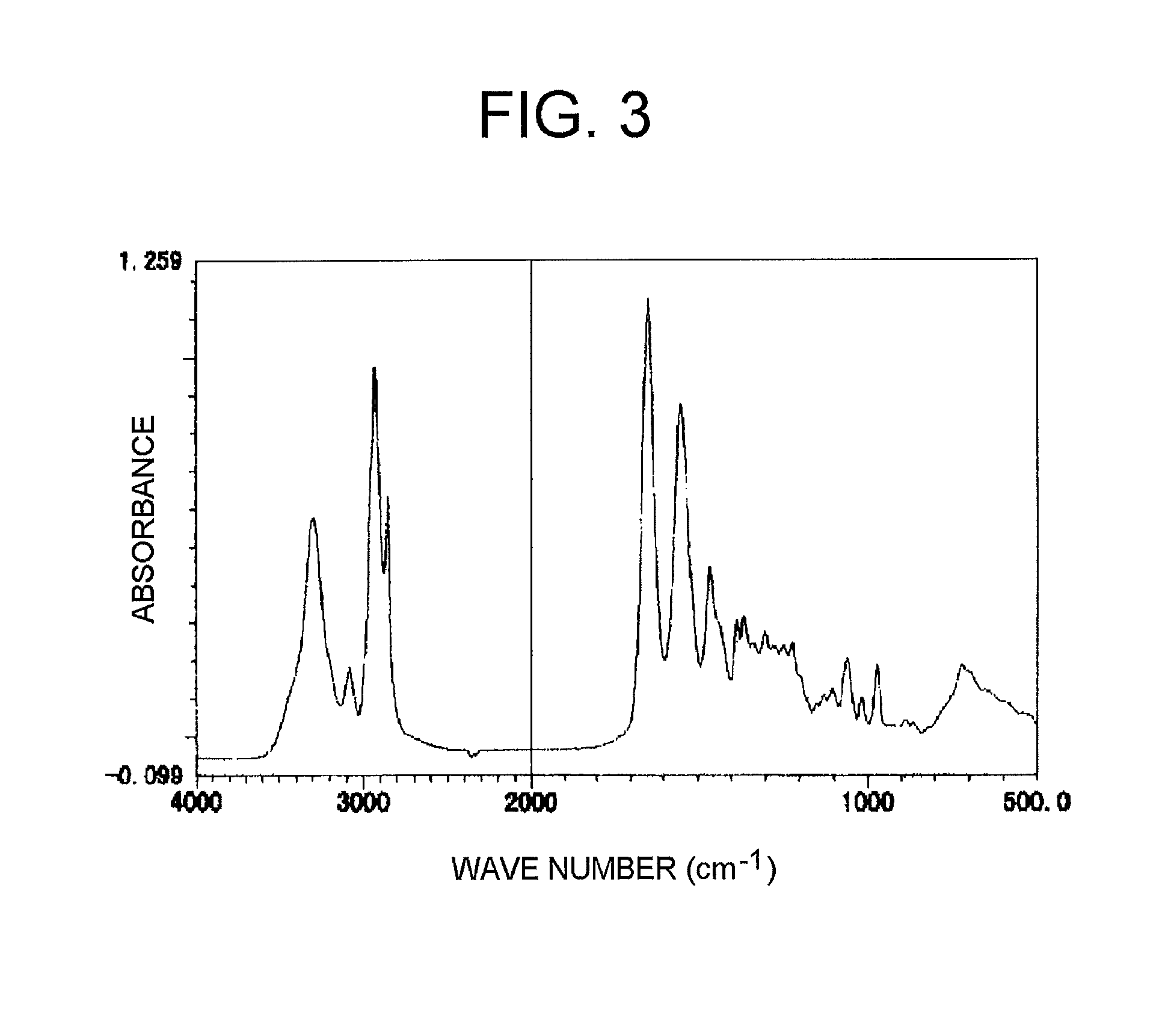Electrophotographic photoconductor, manufacturing method thereof, and electrophotographic device
a photoconductor and electrophotography technology, applied in the field of electrophotographic devices, can solve the problems of shortening the life affecting the performance of the electrophotographic photoconductor, and affecting the quality of the electrophotographic photoconductor, and achieves enhanced hole transport performance, small drop in density, and high dispersion stability.
- Summary
- Abstract
- Description
- Claims
- Application Information
AI Technical Summary
Benefits of technology
Problems solved by technology
Method used
Image
Examples
example 1
[0088]As resin starting materials there were used 4 mol % of isophthalic acid, 46 mol % of dodecanedioic acid, and 50 mol % of isophorone diamine, which were adjusted to a total weight of 1 kg and were mixed in a 2,000 mL four-neck flask. The temperature in the reaction system was raised to 200° C. under a nitrogen stream, and the water component distilled out was collected. After 1 hour, the temperature was further raised to 300° C., and the polymerization reaction was left to proceed until no more water was distilled out, to obtain a resin of Example 1. FIG. 3 shows the infrared absorption spectrum of the resin.
[0089]Next, 0.5 g of the obtained resin was dissolved in 30 mL of methanol. Once dissolved, the resin was titrated with a 0.5 mol % KOH ethanol solution using phenolphthalein as an indicator. A blank test was conducted and then the acid value was calculated on the basis of the difference between the titration quantities in the sample and in the blank test.
[0090]Similarly, 0...
example 2
[0097]A resin of Example 2 was obtained in the same way as in Example 1, except that herein the resin starting materials used were 2 mol % of isophthalic acid, 48 mol % of dodecanedioic acid and 50 mol % of isophorone diamine. The acid value of the obtained resin was 3.58 KOH mg / g, and the base value was 3.25 KOH mg / g. The resin was used in the same way as in Example 1 to prepare an undercoat layer coating solution, and to manufacture a photoconductor 7 in the same way as in Example 1.
example 3
[0098]A resin of Example 3 was obtained in the same way as in Example 1, except that herein the resin starting materials used were 6 mol % of isophthalic acid, 44 mol % of dodecanedioic acid and 50 mol % of isophorone diamine. The acid value of the obtained resin was 3.35 KOH mg / g, and the base value was 2.78 KOH mg / g. The resin was used in the same way as in Example 1 to prepare an undercoat layer coating solution, and to manufacture a photoconductor 7 in the same way as in Example 1.
PUM
 Login to View More
Login to View More Abstract
Description
Claims
Application Information
 Login to View More
Login to View More - R&D
- Intellectual Property
- Life Sciences
- Materials
- Tech Scout
- Unparalleled Data Quality
- Higher Quality Content
- 60% Fewer Hallucinations
Browse by: Latest US Patents, China's latest patents, Technical Efficacy Thesaurus, Application Domain, Technology Topic, Popular Technical Reports.
© 2025 PatSnap. All rights reserved.Legal|Privacy policy|Modern Slavery Act Transparency Statement|Sitemap|About US| Contact US: help@patsnap.com



